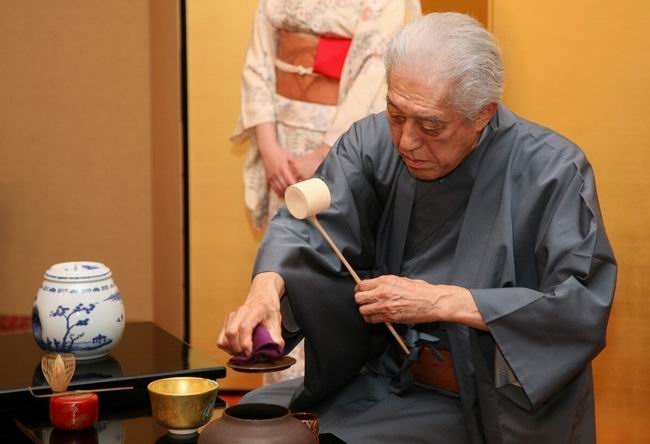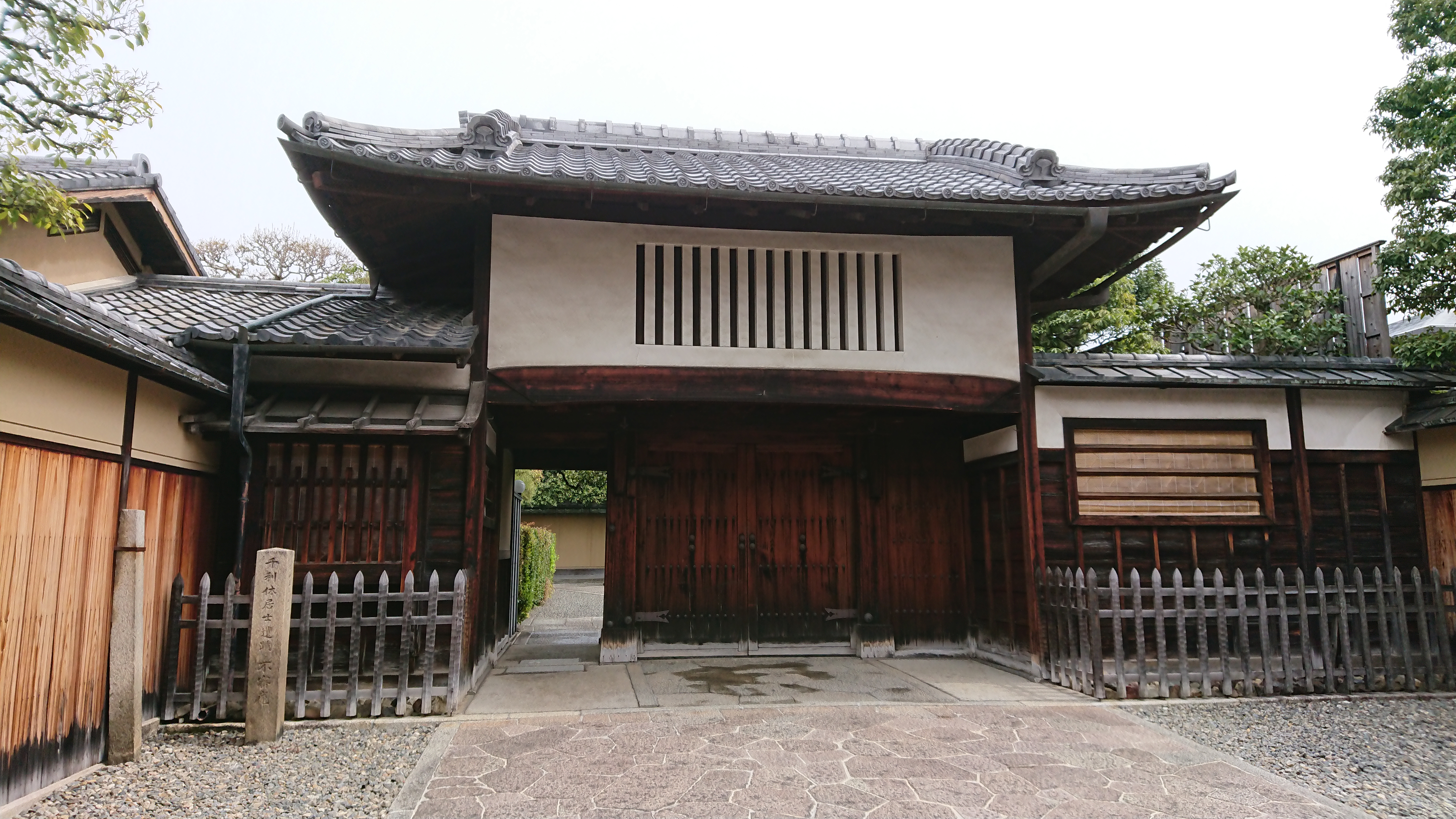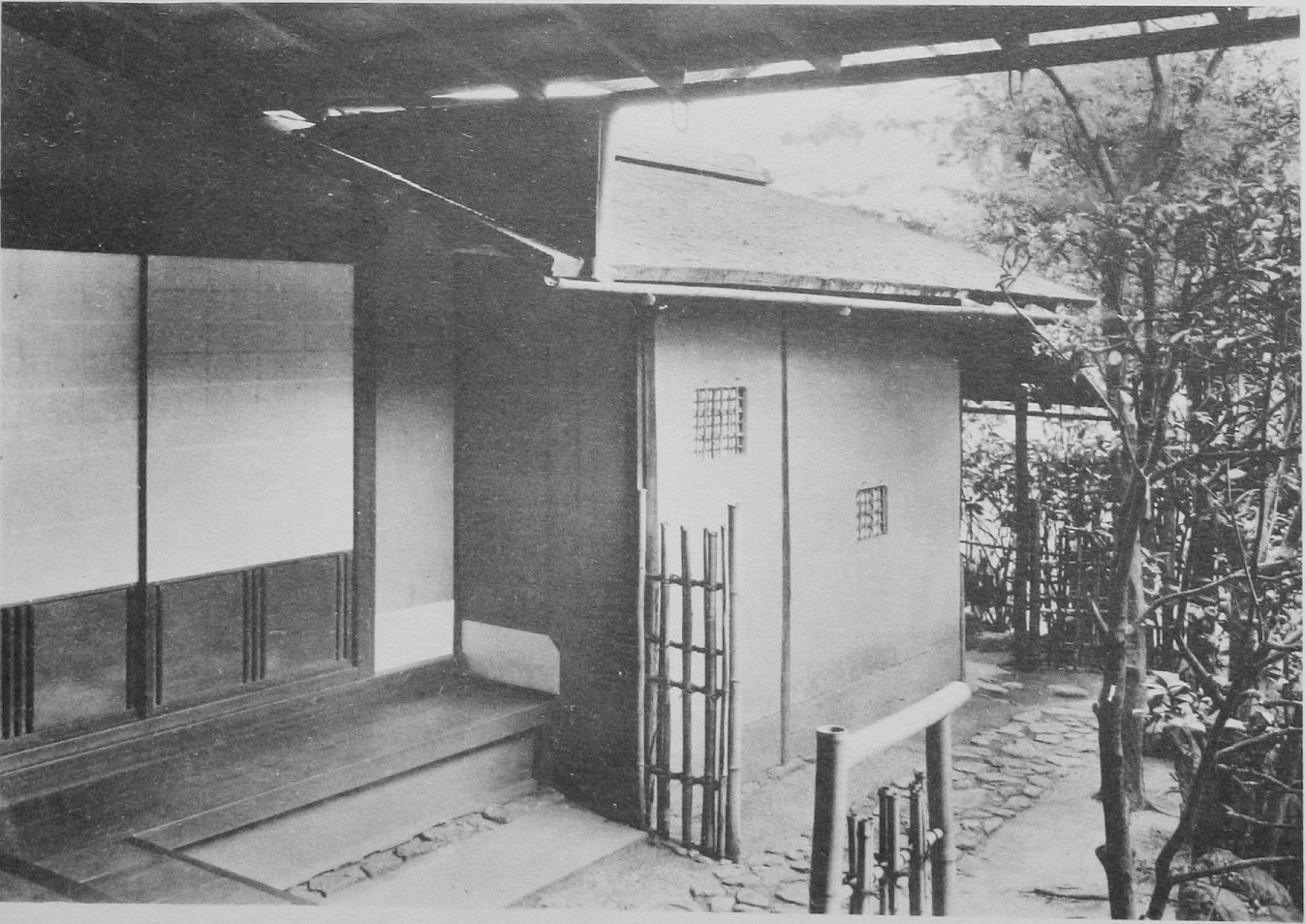|
Sen Sōsa
is the name given to the of the Omotesenke line of the three Sen families/houses () of Japanese tea ceremony, whose common family founder is Sen no Rikyū. Sen is the family name; Sōsa is the hereditary name of the in this line. The first in the line to use the hereditary name was Sen no Rikyū's great-grandson, known as Kōshin Sōsa (1613–1672), the third son of Sen no Sōtan, who inherited the main house in Kyoto from his father, Sōtan, and thus became the first generation in the line of the family that eventually came to be known as the Omotesenke ("front Sen house/family"). Similarly, Sen Sōshitsu is the hereditary name of the in the Urasenke line of the three Sen families/houses, and Sen Sōshu Sen Sōshu (千宗守) is the hereditary name of the head of the Mushakōjisenke school of Japanese tea ceremony The Japanese tea ceremony (known as or ) is a Japanese cultural activity involving the ceremonial preparation and presentation of ... is the name of the ... [...More Info...] [...Related Items...] OR: [Wikipedia] [Google] [Baidu] |
Iemoto
is a Japanese term used to refer to the founder or current Grand Master of a certain school of traditional Japanese art. It is used synonymously with the term when it refers to the family or house that the iemoto is head of and represents. The word is also used to describe a system of familial generations in traditional Japanese arts such as tea ceremony (including ), , Noh, calligraphy, traditional Japanese dance, traditional Japanese music, the Japanese art of incense appreciation (), and Japanese martial arts. and Go once used the system as well. The system is characterized by a hierarchical structure and the supreme authority of the , who has inherited the secret traditions of the school from the previous . Titles An may be addressed by the title or , or by the title or . In English, is often translated as "Grand Master". The 's main roles are to lead the school and protect its traditions, to be the final authority on matters concerning the school, to issue or a ... [...More Info...] [...Related Items...] OR: [Wikipedia] [Google] [Baidu] |
Omotesenke
Omotesenke (表千家) is one of the schools of Japanese tea ceremony. Along with Urasenke and Mushakōjisenke, it is one of the three lines of the Sen family descending from Sen no Rikyū, which together are known as the san-Senke or "three Sen houses/families" (三千家). The name "Omotesenke", literally meaning "front Sen house/family," came into being as a natural occurrence, because of the location of the homestead of this line of the family in relation to that of the line of the family at what originally was the rear (ura) of the Sen estate. The name "Mushakōjisenke" for the other of the three lines of the family derives from the fact that the family's homestead is located along Mushakōji street. History The Omotesenke estate, known by the name of its representative tea room, the "Fushin-an" (不審庵), was where Sen no Rikyū's son-in-law, Sen Shōan, reestablished the Kyoto Sen household after Rikyū's death. It is located on Ogawa street in the Kamigyō ward of K ... [...More Info...] [...Related Items...] OR: [Wikipedia] [Google] [Baidu] |
Japanese Tea Ceremony
The Japanese tea ceremony (known as or ) is a Japanese cultural activity involving the ceremonial preparation and presentation of , powdered green tea, the procedure of which is called . While in the West it is known as "tea ceremony", it is seldom ceremonial in practice. Most often tea is served to family, friends, and associates; religious and ceremonial connotations are overstated in western spaces. While in the West it is known as a form of tea ceremony, in Japan the art and philosophy of tea can be more accurately described as "Teaism" as opposed to focusing on the ceremonial aspect. Zen Buddhism was a primary influence in the development of the culture of Japanese tea. Much less commonly, Japanese tea practice uses leaf tea, primarily , a practice known as . Tea gatherings are classified as either an informal tea gathering () or a formal tea gathering (). A is a relatively simple course of hospitality that includes confections, thin tea, and perhaps a light meal. A is a ... [...More Info...] [...Related Items...] OR: [Wikipedia] [Google] [Baidu] |
Sen No Rikyū
, also known simply as Rikyū, is considered the historical figure with the most profound influence on ''chanoyu,'' the Japanese "Way of Tea", particularly the tradition of '' wabi-cha''. He was also the first to emphasize several key aspects of the ceremony, including rustic simplicity, directness of approach and honesty of self. Originating from the Sengoku period and the Azuchi–Momoyama period, these aspects of the tea ceremony persist. Rikyū is known by many names; for consistency, he will be referred to as Rikyū in this article. There are three ''iemoto'' (''sōke''), or 'head houses' of the Japanese Way of Tea, that are directly descended from Rikyū: the Omotesenke, Urasenke, and Mushakōjisenke, all three of which are dedicated to passing forward the teachings of their mutual family founder, Rikyū. Early life Rikyū was born in Sakai in present-day Osaka Prefecture. His father was a warehouse owner named , who later in life also used the family name Sen, and his ... [...More Info...] [...Related Items...] OR: [Wikipedia] [Google] [Baidu] |
Sen No Sōtan
(1578–1658), also known as Genpaku Sōtan 元伯宗旦, was the grandson of the famed figure in Japanese cultural history, Sen no Rikyū. He is remembered as Rikyū's third-generation successor in Kyoto through whose efforts and by whose very being, as the blood-descendant of Rikyū, the ideals and style of Japanese tea ceremony proposed by Rikyū were able to be passed forward by the family. Biography He was the son of Sen Shōan and Okame, a daughter of Rikyū, and is counted as the third generation in the three lines of the Sen family known together as the ''san-Senke'' (see Schools of Japanese tea ceremony). He helped to popularize tea in Japan. It was in the generation of his children, Sōsa, Sōshitsu and Sōshu, that the three lines of the family—the Omotesenke, Urasenke and Mushakōjisenke—were established, with these three sons, respectively, as their heads of house. They are counted as the fourth generation in the respective lines. He had the original tea hou ... [...More Info...] [...Related Items...] OR: [Wikipedia] [Google] [Baidu] |
Sen Sōshitsu
is the traditional name carried by the head of the Urasenke family. Sen is the family name and Sōshitsu is the hereditary name assumed by the successor upon becoming ''iemoto'' of Urasenke. The first person in this line of the Sen family to use the name Sōshitsu was the youngest son of Sen no Sōtan; in other words, a great-grandson of Sen no Rikyū. He is generally known as Sensō Sōshitsu (仙叟宗室), without mention of the family name, and is counted as the fourth generation in the Urasenke family line. The current head of Urasenke is the sixteenth generation, Sen Sōshitsu XVI, who is distinguished by his cognomen, Zabōsai. The kanji character for ''sō'', 宗, in the hereditary name may be interpreted to mean "family core". Like the head of Urasenke, the heads of other schools of Japanese tea ceremony also have hereditary names beginning with this kanji character. For example, the head of the Omotesenke school traditionally carries the name Sōsa, written 宗左, and t ... [...More Info...] [...Related Items...] OR: [Wikipedia] [Google] [Baidu] |
Urasenke
is one of the main schools of Japanese tea ceremony. Along with and , it is one of the three lines of the family descending from , which together are known as the - or the "three houses/families" (). The name , literally meaning "rear house/family", came into existence due to the location of the homestead of this line of the family in relation to what was originally the frontmost house (the ) of the estate. The other main schools of Japanese tea ceremony, and , also follow this naming convention, with the former meaning "front house/family", and the latter derived from the street name of the family's homestead, . History The three houses derive from descendants of , who was active during the period and is the most historically important figure within Japanese tea ceremony. 's hometown was , in the province of (in present-day Osaka prefecture). However, as his activities became centered in Kyoto, he kept a house in Kyoto. He also had his adopted son-in-law, , who was ... [...More Info...] [...Related Items...] OR: [Wikipedia] [Google] [Baidu] |
Sen Sōshu
Sen Sōshu (千宗守) is the hereditary name of the head of the Mushakōjisenke school of Japanese tea ceremony The Japanese tea ceremony (known as or ) is a Japanese cultural activity involving the ceremonial preparation and presentation of , powdered green tea, the procedure of which is called . While in the West it is known as "tea ceremony", it is se ..., whose founder was the 16th century tea master, Sen no Rikyū. Chadō {{Japan-bio-stub ... [...More Info...] [...Related Items...] OR: [Wikipedia] [Google] [Baidu] |
Mushakōjisenke
, sometimes referred to as ''Mushanokōjisenke'', is one of the schools of Japanese tea ceremony. Along with Urasenke and Omotesenke, the Mushakōjisenke is one of the three lines of the Sen family descending from Sen no Rikyū, which together are known as the san-Senke or "three Sen houses/families" (三千家). The head or ''iemoto'' of this line carries the hereditary name Sōshu (宗守). History Mushakōjisenke is associated with Sen no Rikyū's great-grandson , who was the second to the oldest of Sen no Sōtan's four sons. Like his older brother, he was Sōtan's son by Sōtan's first wife, and through much of his life he lived apart from the Sen house. During this time, he became a lacquer artisan. At the behest of his younger brothers, however, he set up his own tea house, called the Kankyū-an, on Mushakōji street, and became devoted to practicing and teaching the Way of Tea."Senke to Kankyū-an no rekishi" iMushakōjisenke official website Accessed August 8, 2008. Ic ... [...More Info...] [...Related Items...] OR: [Wikipedia] [Google] [Baidu] |
Daijirin
is a comprehensive single-volume Japanese dictionary edited by , and first published by in 1988. This title is based upon two early Sanseidō dictionaries edited by Shōzaburō Kanazawa (金沢庄三郎, 1872–1967), ''Jirin'' (辞林 "Forest of words", 1907) and the revised ''Kōjirin'' (広辞林 "Wide forest of words", 1925). History Sanseido specifically created ''Daijirin'' to compete with Iwanami's profitable ''Kōjien'' dictionary, which was a longtime bestseller through three editions (1955, 1969, and 1983). Two other contemporary dictionaries directed at the ''Kōjien'' market share were Kōdansha's color-illustrated ''Nihongo Daijiten'' (日本語大辞典 "Great dictionary of Japanese", 1989) and Shōgakukan's ''Daijisen'' (大辞泉 "Great fountainhead of words", 1995, also edited by Akira Matsumura). The first edition of ''Daijirin'' (1988) had 220,000 headword entries and included encyclopedic content in numerous charts, tables, and illustrations. While ''Kōjien' ... [...More Info...] [...Related Items...] OR: [Wikipedia] [Google] [Baidu] |
Daijisen
The is a general-purpose Japanese dictionary published by Shogakukan in 1995 and 1998. It was designed as an "all-in-one" dictionary for native speakers of Japanese, especially high school and university students. History Shogakukan intended for the to directly compete with Iwanami's popular desktop dictionary, which was a bestseller through three editions (1955, 1969 and 1983). The followed upon the success of two other competitors, Sanseido's ("Great forest of words", 1988, 1995, 2006) and Kōdansha's color-illustrated ("Great dictionary of Japanese", 1989, 1995). All of these dictionaries weigh around and have about 3000 pages. The 1st edition of the (1995) included over 220,000 entries and 6000 all-color illustrations and photographs. The chief editor was also chief editor of the directly-competing dictionary. Other editors included , , and . Shogakukan also released a CD-ROM version (1997) of the 1st edition. The "enlarged and revised" edition (1998) was more of ... [...More Info...] [...Related Items...] OR: [Wikipedia] [Google] [Baidu] |
Kōjien
is a single-volume Japanese dictionary first published by Iwanami Shoten in 1955. It is widely regarded as the most authoritative dictionary of Japanese, and newspaper editorials frequently cite its definitions. As of 2007, it had sold 11 million copies. Izuru Shinmura ''Kōjien'' was the magnum opus of Shinmura Izuru, 1876–1967, a professor of linguistics and Japanese at Kyoto University. He was born in Yamaguchi Prefecture and graduated from the prestigious Tokyo University, where he was a student of . After studying in Germany, Ueda taught comparative linguistics and edited foreign-language dictionaries in the latter part of the Meiji era. Through his tutelage, Shinmura became involved in Japanese language lexicography. Even ''Kōjien'' editions published after his death credit Shinmura as the chief editor. History Jien The predecessor of ''Kōjien'' originated during the Great Depression in East Asia. In 1930, the publisher Shigeo Oka (岡茂雄, ''Oka Shigeo'', 18 ... [...More Info...] [...Related Items...] OR: [Wikipedia] [Google] [Baidu] |




.jpg)
